Urban fauna
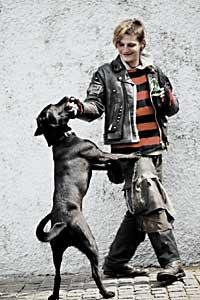
Although they have become accustomed to living among humans, buildings, vehicles, lights and cables, the natural place of animals that form urban fauna is not the city. Most of them have been urbanized because they find easy food, and therefore they do not have to bear special risks.
It is often difficult to realize that they are there. And that is precisely the best thing for animals living in cities, to go unnoticed. Problems begin when they are too obvious, both for themselves and for citizens.
Source of health problems
It is never known how the health status of animals living in freedom is, which is actually considered a dangerous state by citizens. In fact, animals living in cities can be a source of problems.
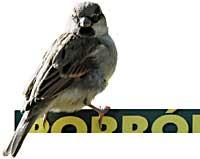
Some of them refer to the appearance and infrastructure of the city, also to the ecoonomy, since in many cases it is necessary to spend money to control them, eliminate them or repair their damage. Most of them are obvious: dirty walls and sculptures, scratched lighting cables, rust, damage to tubes and roofs...
However, health-related problems are the most worrying for the population, since animals can carry diseases or parasites. Some of them are also transmissible to humans. Hence the concern arises and, to respond in some way, controls are carried out.
Population limitation

The term control is cited by experts in cleaning, disinfection, etc., but you have to call everything by name, and in this case it is beyond controlling the meaning of the word, since the objective is to limit the population.
For example, with the pigeons captured, most of the time euthanasia is made, which are killed with gas, but sometimes sent to other peoples or to doves. The same is done with dogs and cats, who are taken to the kennels and, after a time of stay in them, if no one takes them, they are killed.
In the case of rats, the goal is to control the population, preventing it from growing spectacularly. To do this, poisons that prevent blood clotting are used so that rats that have ingested poison from internal bleeding die bleached. From time to time the type of poison changes, we are resistant to rats.
Pests
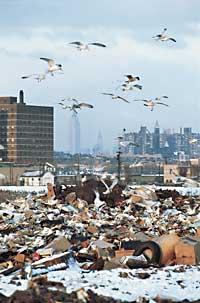
When in a city or town you hear that there is too much dove, rat, dog or cat, which are the most common, when you start to hear the word epidemic and when people are saying that the city council should do something, real problems for the animals of the cities begin. Speaking of urban fauna, from a scientific or objective point of view, it is difficult to point out the existence of an epidemic, which is marked by the calls made by the population. If the number of complaints received by the City Council is increased over a certain period of time, the City Council must take action.
In these cases it is believed that the animal population has increased, but it does not have to be so. It is possible, for example, that without an increase of the population, the activity of the animals grows, increase the own activity. The citizen would feel plague, even if there was no panic.

Here and there the numbers appear, but according to experts it is almost impossible to produce reliable censuses of urban fauna. It is often said that there are ten rats per person or that in the large cities of southern Europe there can be about 1,500 pigeons per square kilometer, but these figures can vary greatly. If food decreases or increases, if the season is not the most suitable, if there are diseases that affect the population... there are great differences.
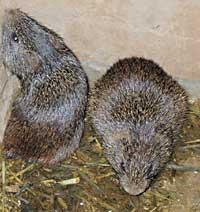
Again pigeons for example. Put imagination in any square of any city. There lives a stable colony of 500 pigeons, which can be counted approximately. It is their home, because in the same square they can put nests and get enough food for the whole group. It is not possible to catch them all, but if most of them stay in the square for more pigeons. To the square smaller pigeon colonies of the surroundings will approach as the place is pleasant and remained free. With other animals it is even more difficult to make calculations about the population. How to know how many rats, swallows, squirrels, cats... there are in a city? There is no way.
Control systems
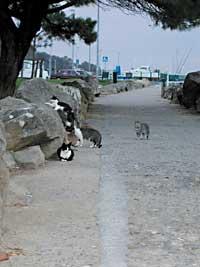
No matter the number of animals. If this or another seems to have increased, city councils will take control measures.
There are currently eleven companies dedicated to urban wildlife control. Many of them deal mainly with pests that occur inside buildings. If termites, sitsa, mice, etc. are found, they establish measures and treatments to repair the damage. These are also fauna and live in cities, but, somehow, they can be a particular problem.
There are also many companies that handle the rest of animals and mostly use similar systems. Smokers are one of the sets of systems. Some of them are electronic, which send sound signals that are not human, but that can frighten and receive animals.
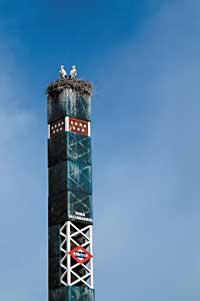
Visual repellers such as chorizos are also used. In view of this, animals escape. Finally, there are chemical repellents, systems that transmit some odor that is annoying or dangerous for animals. In addition to repellents, or repellents, there are jets, viscous substances, mechanics, brushes... And poisons can also be part of this group. Poisons are very varied and can be found in different formats: powder, liquid, bags... They are mainly used with rats.
In the case of birds, preventive measures such as metal and electrical spines are adopted in buildings or monuments, or networks. Nets are also used for bird capture. The technique is to find a group of birds, attract in some way and launch the net. Networks are launched at high speed using machines and captured below.
There are other control systems such as sticks or special boxes for catching dogs or cats. However, the most effective control system is to close animal access to food. If they do not have food, they will hardly continue in an unpleasant and natural environment of the city.
Cat
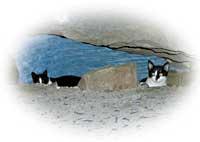
The street cat is part of the urban fauna. It stands out especially in cases of caution or population increase. Despite its solitary appearance, the street player lives in groups and each group has its own space. If there is food there will also be cats.
As in the case of birds, with cats it is very difficult to know how much there really is. However, there are estimates. According to the Animal Protection Center of the City of Madrid, in the Spanish State there may be two million cats. This same center receives every year about 1,000 cats. In addition to cleaning them, cats are dewormed and identified. They are also given the rabies vaccine and sometimes neutered and sterilized. However, most captured street cats are slaughtered, as they are used to walking on their own and adoption is virtually impossible.
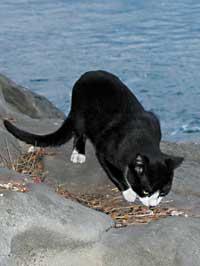
According to a recent study in the United States, 60% of unsterilized households become a street cat. However, most street cats are born on the street. That is why it is almost impossible to know how many cats there are in the cities, where they are from, what diseases... Stray cats are skilled in fishing mice and rats, so they generate less concern than other animals. However, there are problems: they break the garbage bags and spread the garbage, they hurt when they meet in the group and hinder, also leave the feces on the street, like the dogs, although they do not look.
Swallow
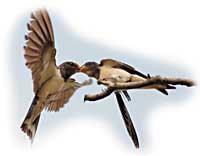
It comes with spring and leaves before the end of autumn in search of warmer places. Nests with grass, straw, feathers and mud, usually in the attic. Lay three or four eggs.
After birth, the swallow spends about a month and a half in the nest. It feeds mainly on insects and is of great help to farmers.
However, due to excrement, in many places people destroy their nests. What was said for the swallow also serves for the sorbent.
Sparrow
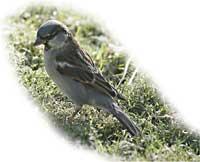
He is one of the most irreverent. It has adapted perfectly to the life of towns and cities. Imagine that when small villages are left, the sparrow also disappears. He lives in group colonies. Eat seeds, insects, and trash. It has three or four stages a year and takes advantage of the slits of the buildings to nest.
Dove
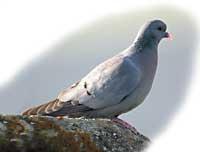
The Palomares are born around April with early spring. They will stay in the nest between 4 and 6 weeks guarded by their parents. These are the most active days of birds and, therefore, the most important ones, since dirt begins to accumulate. According to experts, in the large cities of southern Europe there are about 1,500 pigeons per square kilometer, Barcelona being the city with the highest concentration of pigeons in Europe: 3,000 square kilometers.
The dove in nature can be reached at 15 years, while in the city barely exceeds 5. The dove of the cities eats mainly trash, waste abandoned by humans.
Every week you need half a kilo of food and, to facilitate digestion, take food along with grains of sand or precious stones. He is also fond of water, has the ability to survive a few days without eating, but needs water daily.
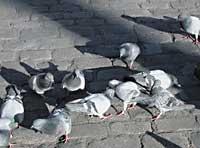
The excrement of pigeons is very corrosive and can destroy young plants and trees in the gardens. It often has fleas, capers, mites... The condition of buildings and rooftop pipes is very high, so control measures are often taken.
However, the biggest problem it can cause is another. The dove carries a fungus that can cause histoplasmosis. Pigeon droppings can cause this lung disease in humans. It can also cause ornithosis—a pneumonia-like disease—and salmonellosis.
Squirrel
In the towns and cities of Euskal Herria has not been so far very common, but gradually it is spreading. The squirrel is a hairy and long tail rodent animal. Although those here are reddish, the further north, the darker the squirrels — sometimes almost black — and the further south, the more red.
In the diet of clay the main foods are seeds and fruits: chestnuts, acorns, beech acorns, pine seeds, fungi... However, beetle is not able to find these foods throughout the year, so in the most suitable time for obtaining food, it forms food stores for scarcity situations. If stores run out early, in the spring zone, tree buds, bird eggs, and chickens can usually be eaten.
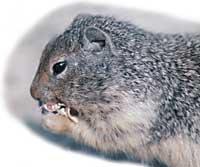
Squirrel is a large animal and in the years when autumn is abundant in seeds, the squirrel population can grow considerably. However, as in most animals with high reproduction rates, the squirrel also presents a high mortality and, at least in natural conditions, the situation is rapidly balanced due to food shortages or harsh winters.
With spring begins a time of great activity for the katagorri: on the one hand, for the need to move more in search of food and, on the other, for the beginning of zeal. After a gestation of 30-35 days 4-7 offspring are born in late spring or early summer. The nest is usually a compact and robust circular structure of twigs and chopsticks to be supported by the union of two or three branches. When autumn comes, the young squirrel launches into his case.
Most of the time she looks for food on the branches, but if she sees no danger, she also goes down to the ground to look for food. In the cities it is concentrated in parks, where there are numerous tree species, although they actually like pine.
Gull
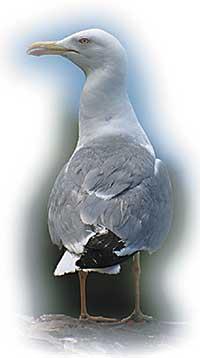
It is very abundant on the coast, although it is also found inland, attracted by the remains of landfills. He lives in a group and eats everything: small fish, crustaceans, garbage... Nests in ravines with feathers and herbs. It has pups in spring, a pair of nests.
Survival for newborns is usually not very easy, because if there is lack of food the gull usually has no problems to become a cannibal. In these cases it feeds not only from offspring but also from eggs. The hórreo is one of the most serious problems that this bird presents, since it forms a hard white layer on stones, plants or fields. This layer can be suffocating for living beings that capture it.
Rat

The component of the genus Rattus performs the usual biological cycle of mammals. At 21 days of cover (sewer rats) or 22 (black rats), between 5 and 15 mice are born. Every year the rat gives birth about five times. It reaches 2-3 years and dies at 5-7 years.
The rats that inhabit among us are the Norwegian Rattus – sewer – and Rattus rattus – black rat. Sewers live in very humid places, especially in sewers, or underground. Good swimmer and good climber. It is omnivorous, it eats everything: insects, meat, grass, wood, plastic... Every day it is able to eat a third of its weight. It moves mainly at night, protected on poles.
The black rat nests in dry places. And it moves around the nest, it doesn't like to go too far.
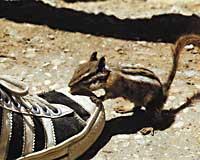
It is also omnivorous. Both species live in a group. Therefore, their behavior is the same, their collective behavior. For example, when they find a new meal, they are totally suspicious. A member of the group will try it first and, if it dies, the rest will not eat it. They have a great ability to develop resistance to poisons. They are also cannibals, so eating poisoned dead rats ingest some poison, they are able to eliminate it and develop immunization.
They live in very dirty places, so rats are carriers of various diseases, although if they do not bear a toothed it is difficult to transmit diseases to man.





